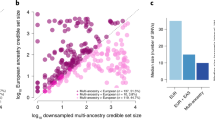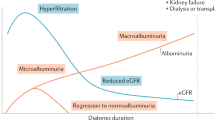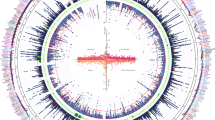Abstract
The Type I Diabetes Genetics Consortium (T1DGC) is an international collaboration whose primary goal is to identify genes whose variants modify an individual's risk of type I diabetes (T1D). An integral part of the T1DGC's mission is the establishment of clinical and data resources that can be used by, and that are fully accessible to, the T1D research community (http://www.t1dgc.org). The T1DGC has organized the collection and analyses of study samples and conducted several major research projects focused on T1D gene discovery: a genome-wide linkage scan, an intensive evaluation of the human major histocompatibility complex, a detailed examination of published candidate genes, and a genome-wide association scan. These studies have provided important information to the scientific community regarding the function of specific genes or chromosomal regions on T1D risk. The results are continually being updated and displayed (http://www.t1dbase.org). The T1DGC welcomes all investigators interested in using these data for scientific endeavors on T1D. The T1DGC resources provide a framework for future research projects, including examination of structural variation, re-sequencing of candidate regions in a search for T1D-associated genes and causal variants, correlation of T1D risk genotypes with biomarkers obtained from T1DGC serum and plasma samples, and in-depth bioinformatics analyses.
This is a preview of subscription content, access via your institution
Access options
Subscribe to this journal
Receive 6 digital issues and online access to articles
$119.00 per year
only $19.83 per issue
Buy this article
- Purchase on Springer Link
- Instant access to full article PDF
Prices may be subject to local taxes which are calculated during checkout

Similar content being viewed by others
References
Fine Mapping of the MHC Region for Type 1 Diabetes Genes: Proceedings of the Type 1 Diabetes Genetics Consortium MHC Fine Mapping Workshop. In SS Rich (ed) Diabetes Obes Metab 2009; 11 (Suppl 1): pp 1–108.
Hulbert EM, Smink LJ, Adlem EC, Allen JE, Burdick DB, Burren OS et al. T1DBase: integration and presentation of complex data for type 1 diabetes research. Nucleic Acids Res 2007; 35: D742–D746.
Wellcome Trust Case Control Consortium. Genome-wide association study of 14 000 cases of seven common diseases and 3000 shared controls. Nature 2007; 447: 661–678.
Concannon P, Erlich HA, Julier C, Morahan G, Nerup J, Pociot F et al. Type 1 diabetes: evidence for susceptibility loci from four genome-wide linkage scans in 1435 multiplex families. Diabetes 2005; 54: 2995–3001.
Concannon P, Chen WM, Julier C, Morahan G, Akolkar B, Erlich HA et al. Genome-wide scan for linkage to type 1 diabetes in 2496 multiplex families from the Type 1 Diabetes Genetics Consortium. Diabetes 2009; 58: 1018–1022.
Todd JA, Walker NM, Cooper JD, Smyth DJ, Downes K, Plagnol V et al. Robust associations of four new chromosome regions from genome-wide analyses of type 1 diabetes. Nat Genet 2007; 39: 857–864.
Hakonarson H, Grant SF, Bradfield JP, Marchand L, Kim CE, Glessner JT et al. A genome-wide association study identifies KIAA0350 as a type 1 diabetes gene. Nature 2007; 448: 591–594.
Cooper JD, Smyth DJ, Smiles AM, Plagnol V, Walker NM, Allen JE et al. Meta-analysis of genome-wide association study data identifies additional type 1 diabetes risk loci. Nat Genet 2008; 40: 1399–1401.
Barrett JC, Clayton D, Pociot F, Julier C, Morahan G, Todd JA et al. A new genome-wide association study and meta-analysis indicates that over 40 loci affect risk of type 1 diabetes. Nat Genet 2009; 41: 703–707.
Weiss LA, Shen Y, Korn JM, Arking DE, Miller DT, Fossdal R et al. Association between microdeletion and microduplication at 16p11.2 and autism. New Engl J Med 2008; 358: 667–676.
Walsh T, McClellan JM, McCarthy SE, Addington AM, Pierce SB, Cooper GM et al. Rare structural variants disrupt multiple genes in neurodevelopmental pathways in schizophrenia. Science 2008; 320: 539–543.
Hurles ME, Dermitzakis ET, Tyler-Smith C . The functional impact of structural variation in humans. Trends Genet 2008; 24: 238–245.
Acknowledgements
This research uses resources provided by the Type I Diabetes Genetics Consortium, a collaborative clinical study sponsored by the National Institute of Diabetes and Digestive and Kidney Diseases (NIDDK), National Institute of Allergy and Infectious Diseases (NIAID), National Human Genome Research Institute (NHGRI), National Institute of Child Health and Human Development (NICHD), and Juvenile Diabetes Research Foundation International (JDRF) and supported by U01 DK062418. Further support was provided by a grant from the NIDDK (DK46635) to PC and a joint JDRF and Wellcome Trust grant to the Diabetes and Inflammation Laboratory at Cambridge that also received support from the National Institute for Health Research Cambridge Biomedical Research Centre.
Author information
Authors and Affiliations
Corresponding author
Rights and permissions
About this article
Cite this article
Rich, S., Akolkar, B., Concannon, P. et al. Current status and the future for the genetics of type I diabetes. Genes Immun 10 (Suppl 1), S128–S131 (2009). https://doi.org/10.1038/gene.2009.100
Published:
Issue Date:
DOI: https://doi.org/10.1038/gene.2009.100



